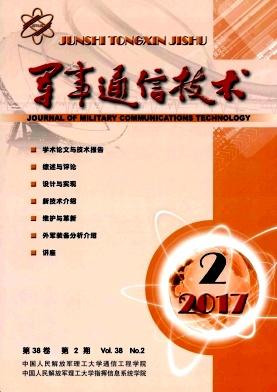Joint channel equalization and interference rejection using a modified constant modulus algorithm
引用次数: 4
Abstract
The authors propose an equalizer structure that combines the properties of both a standard decision-directed equalizer based on a minimum mean-squared error criterion and the '2-1' version constant modulus algorithm (CMA) equalizer. Analytical bit error rate results are presented for a BPSK direct-sequence spread-spectrum system that uses a finite-impulse-response adaptive equalizer based on such a scheme. Severe Frequency-selective distortion and inband tone interference are used as impairments. Preliminary results show 1-3 dB of improvement at low chip energy-to-noise ratios when using a combined CMA and recursive least-squares (RLS) cost function over the decision-directed RLS alone.<联合信道均衡和干扰抑制使用改进的常模算法
作者提出了一种均衡器结构,它结合了基于最小均方误差准则的标准决策导向均衡器和“2-1”版常模算法(CMA)均衡器的特性。给出了基于该方案的有限脉冲响应自适应均衡器的BPSK直接序列扩频系统误码率分析结果。严重的频率选择性失真和带内音干扰被用作损伤。初步结果表明,在低芯片能量噪声比下,使用CMA和递归最小二乘(RLS)成本函数的组合比单独使用决策导向最小二乘(RLS)成本函数的性能提高了1-3 dB
本文章由计算机程序翻译,如有差异,请以英文原文为准。
求助全文
约1分钟内获得全文
求助全文

 求助内容:
求助内容: 应助结果提醒方式:
应助结果提醒方式:


